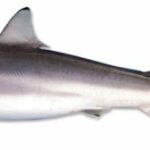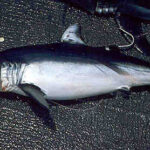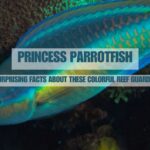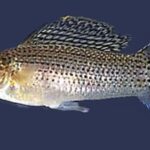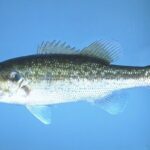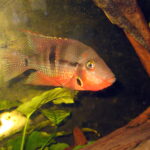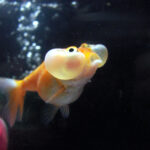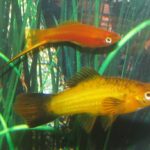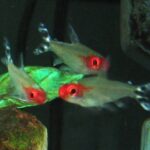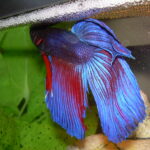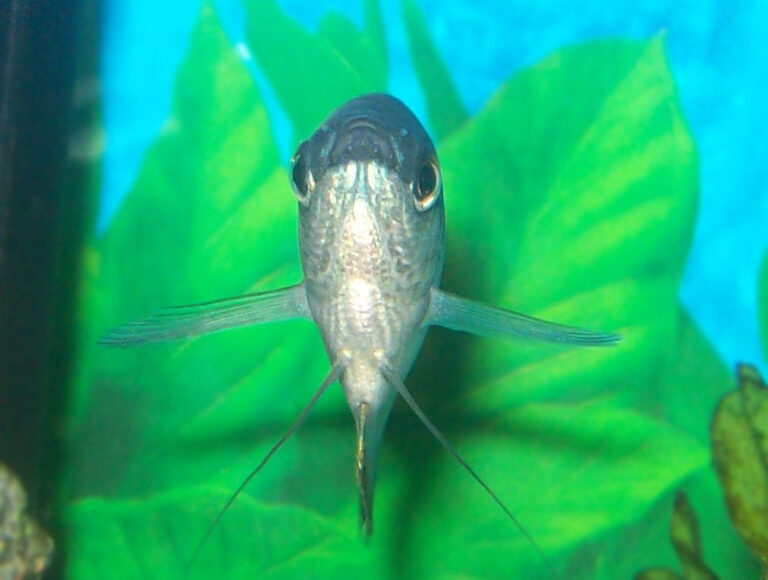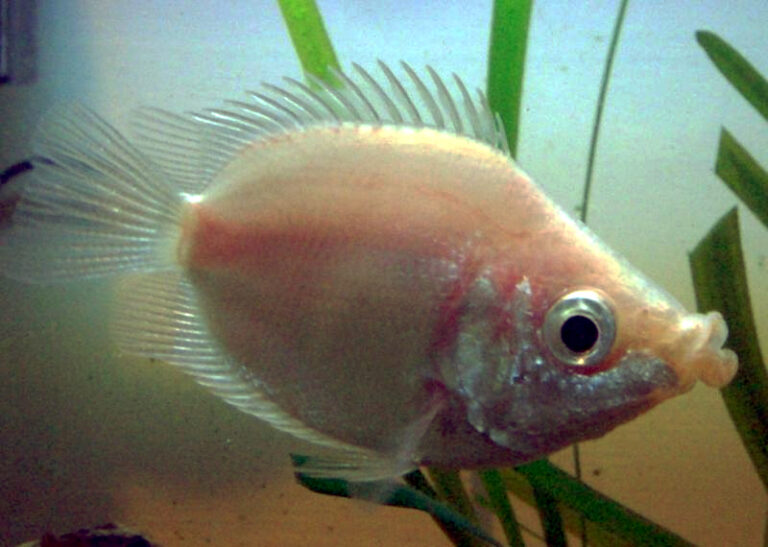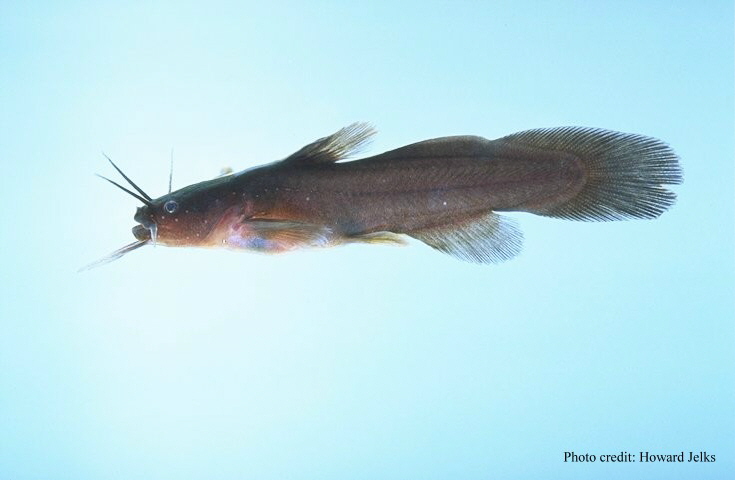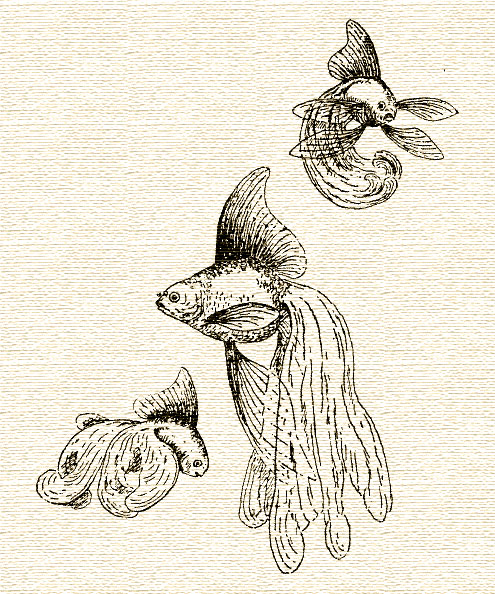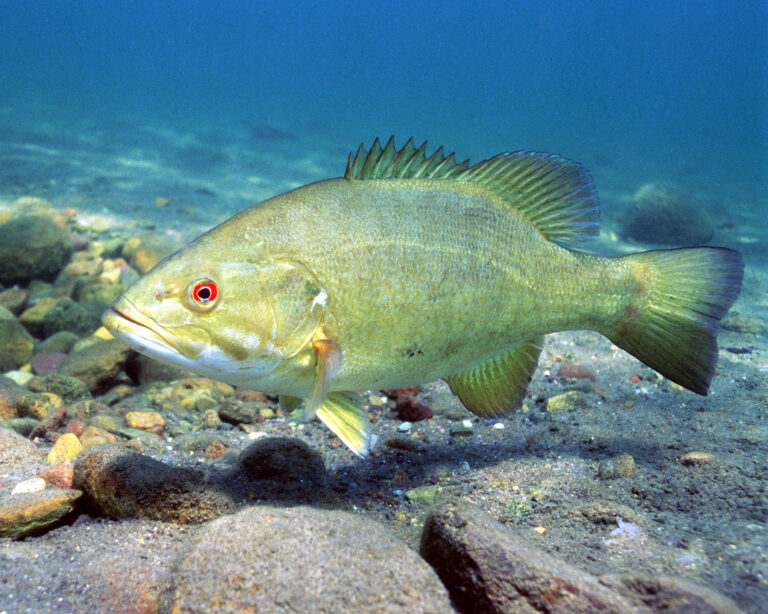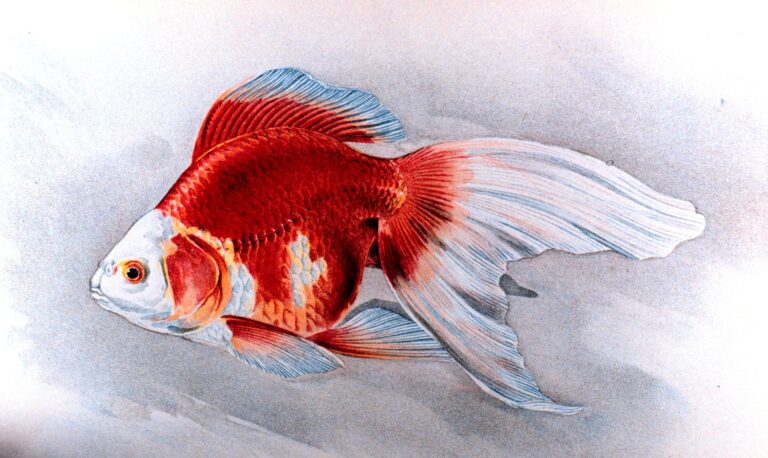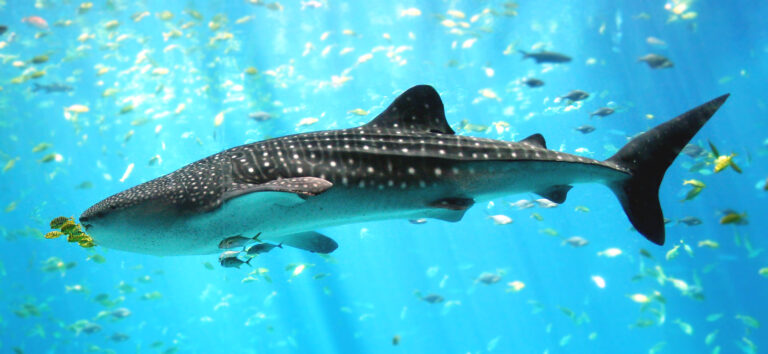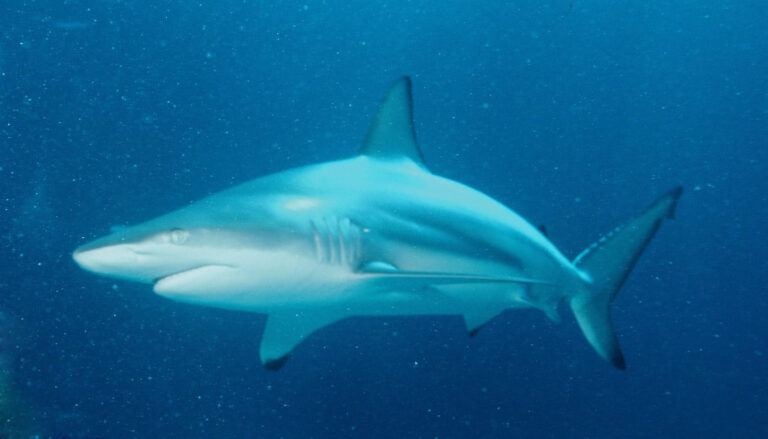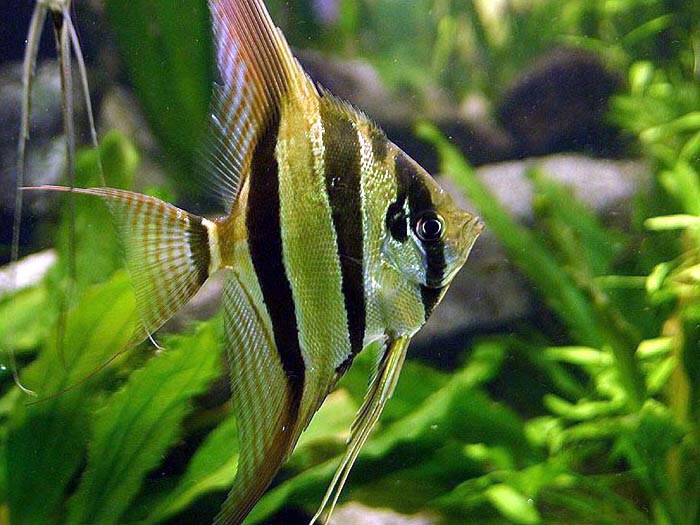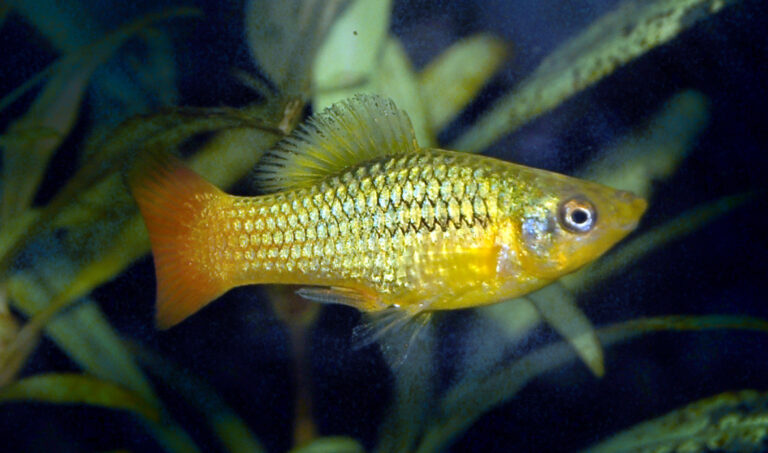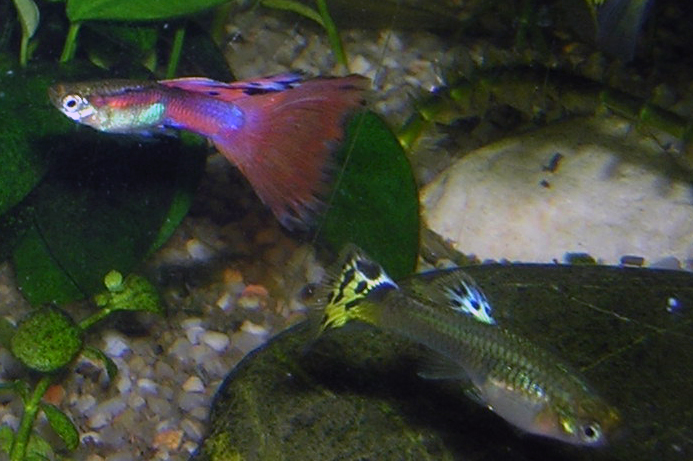Telescope Goldfish
By Ryan Maron | Last Modified: July 3, 2025

The Telescope Goldfish (Carassius auratus) represents one of the most distinctive and recognizable varieties of fancy goldfish in the aquarium trade. Distinguished by its characteristic protruding eyes that extend outward from the head like telescopes, this ornamental fish has captivated aquarists for centuries with its unique appearance and gentle temperament. Originally developed through selective breeding in China during the 1700s, the Telescope Goldfish holds significant cultural importance in Asian societies while serving as a popular companion fish in modern aquariums worldwide.
This fascinating variety plays an important role in the ornamental fish industry, contributing to both commercial breeding operations and hobbyist collections. The species demonstrates remarkable adaptability to various aquatic environments, making it suitable for both indoor aquariums and outdoor pond systems. Understanding the Telescope Goldfish’s biology, behavior, and care requirements provides valuable insights into selective breeding practices and aquatic ecosystem management.
| Feature | Details |
|---|---|
| Common Name | Telescope Goldfish |
| Scientific Name | Carassius auratus |
| Family | Cyprinidae |
| Typical Size | 15-20 cm (6-8 inches), 200-400 grams |
| Habitat | Freshwater aquariums and ponds |
| Diet | Omnivorous |
| Distribution | Captive-bred worldwide |
| Conservation Status | Least Concern (Domestic Variety) |
Taxonomy & Classification
The Telescope Goldfish belongs to the family Cyprinidae, which encompasses over 3,000 species of freshwater fish including carps, minnows, and barbs. Scientifically classified as Carassius auratus, this variety shares its taxonomic designation with all other goldfish breeds, as they represent selective breeding variations rather than distinct species. The genus Carassius includes several species of crucian carps, with C. auratus serving as the ancestral foundation for all domestic goldfish varieties.
Within the goldfish classification system, the Telescope Goldfish falls under the category of fancy goldfish, distinguished from common goldfish by specialized physical characteristics developed through centuries of selective breeding. The variety is sometimes referred to by regional names including Demekin in Japan and Dragon Eye in various Asian markets. These naming conventions reflect the cultural significance and breeding history associated with different geographic regions.
The phylogenetic relationships within Carassius auratus demonstrate the remarkable genetic plasticity that has allowed for the development of numerous distinctive varieties. Modern genetic analysis reveals that all goldfish varieties, including the Telescope Goldfish, maintain the same chromosome number (2n=100) as their wild ancestors, with phenotypic variations arising from specific gene expressions rather than chromosomal changes.
Physical Description
The most distinctive feature of the Telescope Goldfish is its prominently protruding eyes, which extend outward from the head in a telescope-like configuration. These enlarged eyes develop gradually as the fish matures, with juveniles showing less pronounced eye protrusion that becomes more evident over several months. The eyes typically measure 10-15 millimeters in diameter and can extend 5-8 millimeters beyond the normal eye socket position.
Body conformation in Telescope Goldfish tends toward a rounded, egg-shaped profile with a relatively short, compact build. Adult specimens typically reach lengths of 15-20 centimeters and weigh between 200-400 grams, though exceptional individuals may grow larger under optimal conditions. The dorsal fin stands erect and well-developed, while the caudal fin displays moderate forking with rounded lobes that enhance swimming stability.
Coloration varies significantly among Telescope Goldfish populations, with common varieties including metallic orange, red, white, black, and calico patterns. The scales exhibit either metallic or nacreous qualities, with metallic scales producing brilliant reflective surfaces and nacreous scales creating pearl-like iridescence. Some specimens display color-changing abilities, with pigmentation shifting seasonally or in response to environmental conditions such as temperature and lighting.
The swim bladder anatomy in Telescope Goldfish shows modifications that affect buoyancy control, requiring these fish to expend additional energy maintaining proper swimming positions. Their shortened body cavity and compressed internal organs can influence digestive efficiency and respiratory function, making them more sensitive to water quality fluctuations than their wild-type counterparts.
Habitat & Distribution
Telescope Goldfish exist exclusively in artificial environments, having been developed through selective breeding programs rather than evolving in natural habitats. These ornamental fish thrive in freshwater aquarium systems maintained at temperatures between 18-24°C (65-75°F), with pH levels ranging from 6.8 to 7.2. Optimal water conditions include moderate hardness levels of 8-12 dGH and adequate filtration to maintain low ammonia and nitrite concentrations.
In captive environments, Telescope Goldfish demonstrate preference for aquarium setups that provide ample swimming space while minimizing sharp decorations that could damage their protruding eyes. Tank volumes of 150-200 liters per adult fish allow for proper exercise and territorial behavior, while substrate selection should favor smooth materials such as fine gravel or sand to prevent eye injuries during bottom-feeding activities.
Outdoor pond systems offer alternative housing options for Telescope Goldfish in temperate climates, providing seasonal temperature variations that can enhance natural behaviors and coloration. Pond depths of 1.2-1.5 meters allow fish to access different thermal layers, while aquatic vegetation provides shelter and supplemental nutrition. However, the protruding eyes of Telescope Goldfish make them more vulnerable to predation by birds and other aquatic predators compared to standard goldfish varieties.
Geographic distribution of Telescope Goldfish breeding operations spans globally, with major commercial production centers located in China, Japan, Thailand, and several European countries. Hobbyist populations exist throughout North America, Europe, and Australia, where import regulations permit the introduction of ornamental fish species.
Diet & Feeding Behavior
Telescope Goldfish exhibit omnivorous feeding behavior, consuming both plant and animal matter in their natural foraging patterns. Their diet requirements include high-quality commercial goldfish pellets formulated with appropriate protein levels of 30-35% for juveniles and 25-30% for adults. Supplemental foods include blanched vegetables such as peas, lettuce, and spinach, which provide essential fiber and nutrients for digestive health.
Feeding frequency typically involves 2-3 small meals daily, with portion sizes adjusted to prevent overfeeding and subsequent water quality degradation. The protruding eyes of Telescope Goldfish can affect their feeding efficiency, as their altered visual perception may require additional time to locate and consume food items. Sinking pellets often prove more suitable than floating foods, as they allow fish to feed at their preferred bottom-dwelling positions.
Natural foraging behaviors include substrate sifting, where Telescope Goldfish use their pharyngeal teeth to process small invertebrates, algae, and detritus. This feeding method requires careful aquarium management to prevent eye injuries from sharp substrate materials. Live foods such as bloodworms, brine shrimp, and daphnia provide nutritional variety and stimulate natural hunting instincts, though frozen alternatives offer similar benefits with reduced disease risk.
Seasonal feeding adjustments become necessary in outdoor pond environments, where reduced metabolism during winter months requires decreased feeding frequency. Temperature-dependent feeding schedules help maintain optimal body condition while preventing digestive complications associated with cold-water metabolism.
Behavior & Adaptations
Telescope Goldfish display peaceful, social behavior patterns that make them suitable for community aquarium settings with compatible species. Their swimming patterns tend to be more deliberate and less agile than standard goldfish varieties, primarily due to their altered body proportions and visual limitations. These fish often exhibit bottom-dwelling preferences, spending considerable time foraging along substrate surfaces where their reduced visual acuity has less impact on feeding success.
Social interactions among Telescope Goldfish groups reveal hierarchical structures based on size and feeding dominance rather than aggressive territorial behaviors. Schooling tendencies emerge during feeding periods, with individuals gathering in loose aggregations that facilitate resource sharing and protection from perceived threats. The species demonstrates remarkable adaptability to various social configurations, successfully cohabiting with other fancy goldfish varieties in mixed populations.
Sensory adaptations compensate for the visual limitations imposed by their protruding eyes, with enhanced lateral line sensitivity allowing detection of water movement and nearby objects. This heightened mechanoreceptor function helps Telescope Goldfish navigate complex aquarium environments and locate food sources through water displacement patterns rather than visual cues alone.
Circadian rhythm patterns in Telescope Goldfish follow typical goldfish behavior, with increased activity during daylight hours and reduced movement during nighttime periods. Environmental enrichment through varied lighting schedules and habitat complexity can enhance natural behavior expression and reduce stress-related health issues.
Reproduction & Life Cycle
Telescope Goldfish reach sexual maturity at approximately 12-18 months of age, depending on environmental conditions and nutritional status. Breeding behavior follows typical goldfish reproductive patterns, with spawning triggered by gradual temperature increases and photoperiod extension that simulate spring conditions. Males develop breeding tubercles on their gill covers and pectoral fins, while females exhibit increased abdominal fullness due to developing egg masses.
The spawning process involves vigorous chasing behavior where males pursue females through aquatic vegetation or artificial spawning media. Females release 2,000-4,000 adhesive eggs in multiple spawning episodes, with males simultaneously fertilizing the eggs through broadcast spawning. Fertilized eggs attach to plant surfaces or spawning mops, developing over 5-7 days at temperatures of 20-24°C.
Larval development proceeds through several distinct stages, with newly hatched fry measuring approximately 5-6 millimeters in length. The characteristic telescopic eyes do not appear until juveniles reach 8-10 weeks of age, making early identification of telescope traits challenging for breeders. Fry require microscopic foods such as infusoria and newly hatched brine shrimp during the first 2-3 weeks before transitioning to powdered commercial foods.
Selective breeding programs for Telescope Goldfish focus on eye protrusion symmetry, body conformation, and color intensity. Breeding success rates typically range from 60-80% for established breeding pairs, with environmental factors such as water quality and nutrition significantly influencing reproductive outcomes. Genetic diversity maintenance requires careful lineage management to prevent inbreeding depression and preserve desirable traits.
Predators & Threats
In captive environments, Telescope Goldfish face limited natural predation but remain vulnerable to various health threats and environmental stressors. Their protruding eyes create specific vulnerability points that can result in injury from sharp aquarium decorations, aggressive tankmates, or improper handling during maintenance procedures. Eye damage represents the most significant physical threat to these fish, potentially leading to secondary infections and reduced feeding efficiency.
Parasitic infections pose substantial risks to Telescope Goldfish populations, with common afflictions including ich (Ichthyophthirius multifiliis), flukes, and anchor worms. The specialized anatomy of telescope eyes can harbor parasites in areas difficult to treat with standard medications, requiring targeted therapeutic approaches. Bacterial infections such as fin rot and columnaris disease can rapidly spread through populations under poor water quality conditions.
Environmental threats include temperature fluctuations, ammonia spikes, and oxygen depletion events that can trigger stress responses and compromise immune function. The modified swim bladder anatomy in Telescope Goldfish makes them particularly susceptible to buoyancy disorders when exposed to rapid environmental changes or improper feeding practices.
Predation risks increase significantly in outdoor pond settings, where birds, raccoons, and other wildlife may target Telescope Goldfish. Their reduced swimming agility and compromised vision make escape responses less effective compared to standard goldfish varieties. Protective measures such as pond netting and adequate hiding structures help minimize predation losses in outdoor installations.
Conservation Status
The Telescope Goldfish, as a domestic variety of Carassius auratus, does not require specific conservation measures since it exists exclusively in captive breeding programs. However, the genetic diversity preservation of goldfish varieties has become increasingly important as commercial breeding operations consolidate and some traditional strains face potential loss. Maintaining diverse breeding lines helps preserve the genetic foundation necessary for continued variety development and health maintenance.
Wild populations of the ancestral species Carassius auratus maintain stable population levels throughout their native range in East Asia, providing the genetic reservoir from which all domestic varieties derive. The IUCN Red List classifies the species as Least Concern, indicating no immediate conservation concerns for the wild population.
Responsible breeding practices within the ornamental fish industry focus on maintaining genetic health and preventing the development of extreme physical traits that compromise fish welfare. Breeding standards established by aquarist organizations promote ethical selection practices that balance aesthetic appeal with functional anatomy and overall health considerations.
International trade regulations govern the movement of ornamental goldfish varieties between countries, with most nations permitting import and export of Telescope Goldfish under standard aquaculture protocols. These regulations help prevent the introduction of diseases and parasites while supporting legitimate commercial breeding operations.
Human Interaction
Telescope Goldfish have maintained significant cultural importance throughout their development history, particularly in Chinese and Japanese societies where goldfish keeping represents traditional practices passed down through generations. The variety’s distinctive appearance has made it a popular subject in Asian art, literature, and decorative motifs, symbolizing prosperity and good fortune in various cultural contexts.
The modern aquarium hobby extensively features Telescope Goldfish as beginner-friendly species that demonstrate the results of selective breeding while providing engaging pets for aquarists of all experience levels. Their peaceful temperament and relatively straightforward care requirements make them suitable for educational purposes in schools and public aquariums where they help teach concepts of genetics, selective breeding, and aquatic ecosystem management.
Commercial breeding operations worldwide produce millions of Telescope Goldfish annually, supporting both domestic and international markets valued at several hundred million dollars. These operations provide employment opportunities in rural communities while contributing to the broader ornamental fish industry that serves pet stores, aquarium supply retailers, and online marketplaces.
Therapeutic applications of Telescope Goldfish keeping include stress reduction, educational therapy, and elderly care programs where aquarium maintenance provides structured activities and companionship. Research studies have documented the positive psychological effects of aquarium observation, with goldfish varieties serving as accessible options for institutional and home-based therapeutic programs.
Interesting Facts
The telescopic eye development in these goldfish results from a genetic mutation that affects cartilage growth around the eye socket, causing the eyes to protrude outward as the fish matures. This trait can be selectively bred to produce varying degrees of eye protrusion, with some extreme varieties displaying eyes that extend 15-20 millimeters from the head.
Telescope Goldfish possess remarkable longevity potential, with properly maintained specimens living 15-20 years in captivity. The oldest recorded Telescope Goldfish reached 25 years of age, demonstrating the species’ capacity for extended lifespans under optimal care conditions. Their memory retention abilities extend far beyond the common three-second myth, with studies showing goldfish can retain learned behaviors for months.
Color-changing abilities in Telescope Goldfish respond to environmental factors including temperature, lighting, and diet composition. Fish maintained in outdoor ponds often develop more vibrant coloration due to natural sunlight exposure and seasonal temperature variations. Some specimens undergo dramatic color shifts from juvenile to adult stages, with black fry potentially developing orange or red adult coloration.
The swimming patterns of Telescope Goldfish create unique aquarium dynamics, as their reduced visual acuity leads to more exploratory behavior and increased interaction with tank decorations. This behavior pattern can help stimulate natural foraging instincts and provide environmental enrichment that benefits overall health and longevity.
Frequently Asked Questions
Can Telescope Goldfish live with other fish species?
Telescope Goldfish are compatible with other peaceful, cold-water species that share similar temperature and water quality requirements. Suitable tankmates include other fancy goldfish varieties, white cloud mountain minnows, and certain species of plecos. Avoid aggressive species or fin-nipping fish that might injure their protruding eyes.
How often should Telescope Goldfish be fed?
Adult Telescope Goldfish should receive 2-3 small meals daily, with each feeding lasting approximately 2-3 minutes. Juveniles require more frequent feeding of 3-4 times daily to support their growth and development. Monitor feeding carefully to prevent overfeeding, which can lead to water quality problems and digestive issues.
What water temperature is ideal for Telescope Goldfish?
Telescope Goldfish thrive in water temperatures between 18-24°C (65-75°F), with stable conditions being more important than specific temperature ranges. Gradual temperature changes are preferable to sudden fluctuations, which can stress the fish and compromise their immune systems.
Do Telescope Goldfish require special aquarium setup considerations?
Yes, Telescope Goldfish require aquarium setups that accommodate their protruding eyes and reduced swimming agility. Use smooth decorations without sharp edges, provide adequate swimming space with gentle water flow, and ensure proper filtration to maintain excellent water quality. Bottom-feeding areas should be easily accessible with soft substrate materials.
Conclusion
The Telescope Goldfish represents a remarkable achievement in selective breeding, combining distinctive physical characteristics with the hardy nature and peaceful temperament that make goldfish excellent aquarium companions. Understanding their specialized care requirements, from eye protection to appropriate tank setup, ensures these unique fish can thrive in captive environments while displaying their characteristic behaviors and longevity potential that has made them treasured pets for centuries.
Share The Article:
More Fish Species:
-
Blue Gourami
The Blue Gourami (*Trichogaster trichopterus*) stands as one of the most recognizable and adaptable freshwater fish species in tropical…
-
Kissing Gourami
The Kissing Gourami (*Helostoma temminckii*) stands as one of the most distinctive and recognizable freshwater fish species in both…
-
Tadpole Madtom
The Tadpole Madtom (Noturus gyrinus) represents one of North America’s smallest and most elusive catfish species, playing a crucial…
-
Veiltail Goldfish
The Veiltail Goldfish stands as one of the most distinctive and graceful varieties within the goldfish family, renowned for…
-
Smallmouth Bass
The Smallmouth Bass represents one of North America’s most prized freshwater game fish, combining impressive fighting ability with remarkable…
-
Ryukin Goldfish
The Ryukin Goldfish (Carassius auratus) stands as one of the most distinctive and culturally significant ornamental fish varieties in…
Discover
-
What do You Need for Fishing in 2025? | Essential Gear for Beginners and Veterans
As I was organizing my tackle box last weekend for an early spring trip to Lake Michigan, I realized…
-
How to Spool a Baitcaster for Beginners: 6 Simple Steps
I remember the first time I tried spooling a baitcaster reel. What should have been a simple 15-minute job…
-
Whale Shark
The whale shark (*Rhincodon typus*) stands as the ocean’s largest fish species, representing one of nature’s most remarkable gentle…
-
How to Set Up a Fishing Pole For Beginners
After three decades of teaching friends and family how to fish, I’ve learned that setting up a fishing pole…
-
Blacktip Shark
The Blacktip Shark (Carcharhinus limbatus) stands as one of the most recognizable and ecologically significant predators in tropical and…
-
Winter Fishing Tips: 7 Cold-Weather Tactics Successful Anglers Use
Most anglers pack away their gear when the temperature drops, but the dedicated few know something the others don’t:…
Discover
-
Dalmatian Molly
The Dalmatian Molly stands as one of the most recognizable and beloved freshwater aquarium fish, distinguished by its striking…
-
How to Fish for Bluegill: 2025 Complete Guide
Bluegill might not be the biggest fish in the pond, but they sure make up for it in fight…
-
Texas Saltwater Fishing: Essential Tips From Adam
It was June 2010, and man was I cocky heading into that first Texas saltwater trip. Drove down from…
-
Angelfish
Angelfish represent one of the most recognizable and ecologically significant families of marine fish, encompassing over 85 species distributed…
-
Variable Platyfish
The Variable Platyfish (Xiphophorus variatus) stands as one of the most widely recognized and ecologically significant freshwater fish species…
-
Guppy
The Guppy (Poecilia reticulata) stands as one of the most recognizable and extensively studied freshwater fish species in the…

